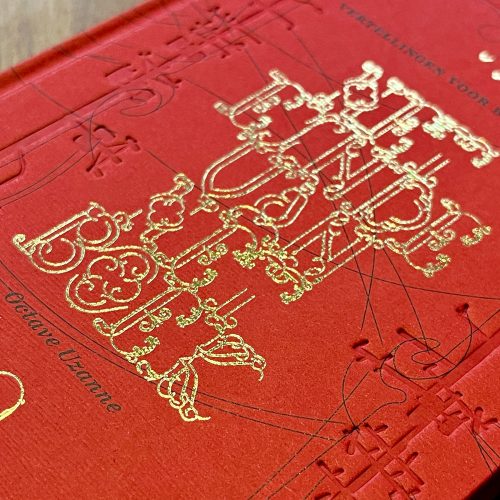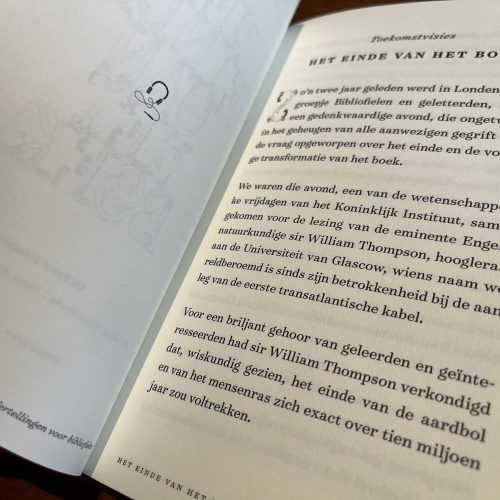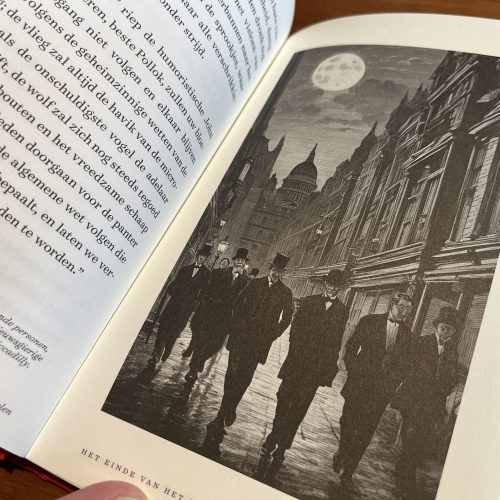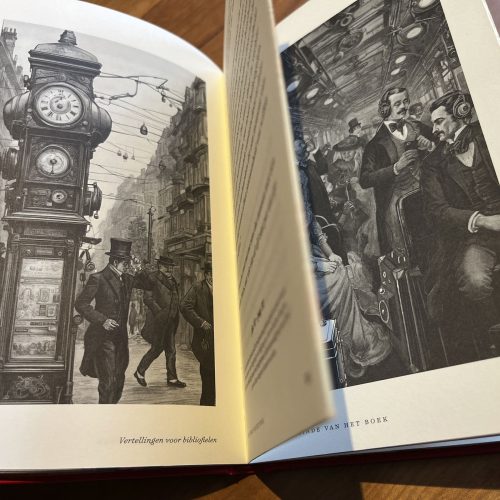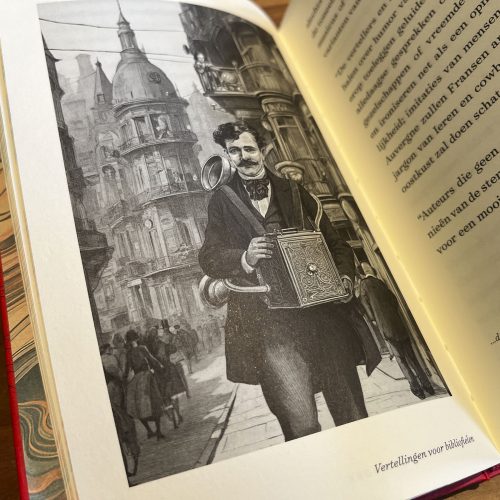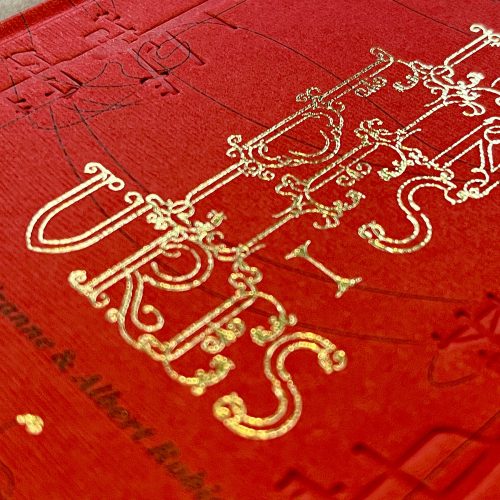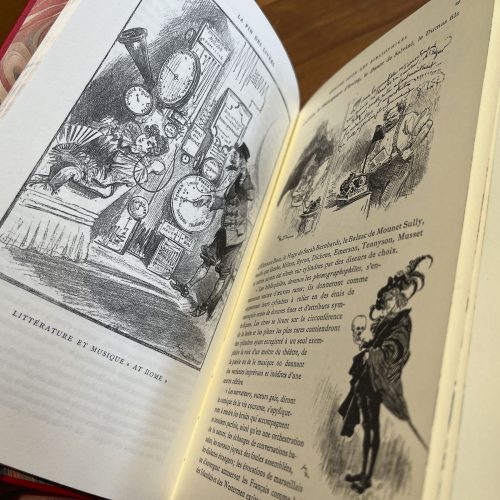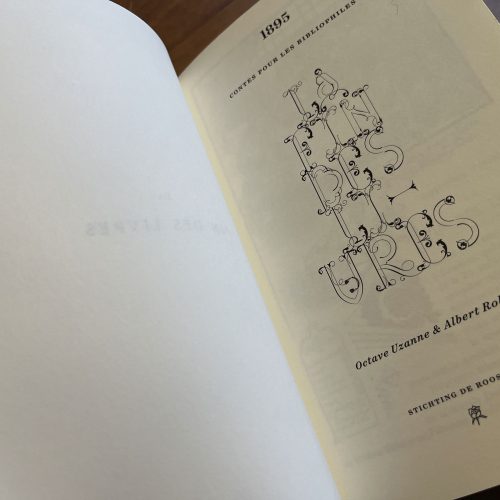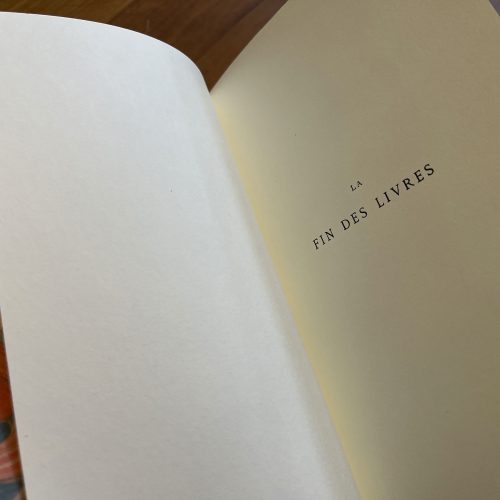The End of the Book
The End of the Book
The Rose Foundation was founded in June 1945 by Chris Leeflang, Charles Nypels and G.M. van Wees. The name was chosen partly as a tribute to the bookseller and type designer S.H. de Roos. The aim of the foundation is to publish (illustrated) literary editions for bibliophiles in an edition of 175 copies. The foundation's first edition was published in 1946. Its best-known book is 'Regular tessellation' (1958), written and illustrated by M.C. Escher. Jan van Krimpen, Jan Bons, Willem Sandberg, Helmut Salden, Harry N. Sierman, Kees Nieuwenhuijzen, Irma Boom, Alfons van Heusden, Dirk van Gelder, Simon Koene, Joost Veerkamp and Karen Polder also designed and/or illustrated editions for De Roos.
The Roos Foundation invited me to design a new Dutch translation of La Fin des Livres, a short story by renowned 19th-century French bibliophile Octave Uzanne. Written in 1894, the story is set in a distant future, perhaps in our time. A time when, according to the protagonist in Uzanne's story, there will no longer be any place for the printed book. All information will be disseminated through audiovisual media. Uzanne makes some striking predictions in his story: the iPod, the podcast, the audiobook, ubiquitous headphones he seems to have foreseen. But he is completely wrong on one point: the book is alive as ever.
This is proven by the design, which is based on the late-19th century bibliophile tradition. A classic typography, a heavily ornamented and tactile cover design, gold foil printing, marble on cut and marbled endpapers. Uzanne himself will hopefully have eagerly accepted it as a clean book. But nothing is what it seems. The typefaces are contemporary reinterpretations. What at first glance appear to be late 19th-century engravings are in reality a collaboration of illustrator Laurens Bontes With artificial intelligence Stable Diffusion.
The edition also includes the original 1895 French edition, which starts with a cover at the back. The book thus has two front covers. Both books meet in the middle, on a black page: the end of the book. There, you will find a QR code that allows your smartphone, entirely in line with Uzanne's text, to view the book itself, the audiobook of the Dutch edition shows. Thus, the design is a connection between past and future, and at the same time a confirmation and a debunking of Uzanne's prediction of the future.

